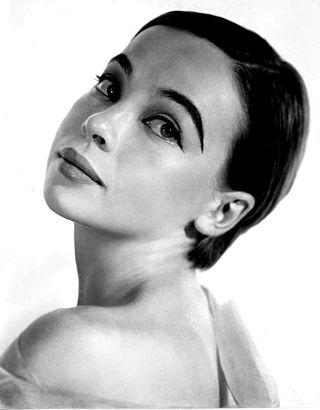
Leslie Claire Margaret Caron is a French and American actress and dancer. She is the recipient of a Golden Globe Award, two BAFTA Awards and a Primetime Emmy Award, in addition to nominations for two Academy Awards. She is one of the last surviving stars from the Golden Age of Hollywood cinema.

Margaretha Geertruida MacLeod, better known by the stage name Mata Hari, was a Dutch exotic dancer and courtesan who was convicted of being a spy for Germany during World War I. She was executed by firing squad in France. The idea of a beautiful exotic dancer using her powers of seduction as a spy made her name synonymous with the femme fatale. Her story has served as an inspiration for many books, films, and other works.

Ballet is a type of performance dance that originated during the Italian Renaissance in the fifteenth century and later developed into a concert dance form in France and Russia. It has since become a widespread and highly technical form of dance with its own vocabulary. Ballet has been influential globally and has defined the foundational techniques which are used in many other dance genres and cultures. Various schools around the world have incorporated their own cultures. As a result, ballet has evolved in distinct ways.

Jean-Baptiste Poquelin, known by his stage name Molière, was a French playwright, actor, and poet, widely regarded as one of the greatest writers in the French language and world literature. His extant works include comedies, farces, tragicomedies, comédie-ballets, and more. His plays have been translated into every major living language and are performed at the Comédie-Française more often than those of any other playwright today. His influence is such that the French language is often referred to as the "language of Molière".
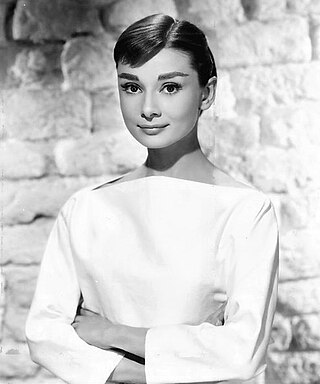
Audrey Hepburn was a British actress and humanitarian. Recognised as a film and fashion icon, she was ranked by the American Film Institute as the third-greatest female screen legend from the Classical Hollywood cinema and was inducted into the International Best Dressed List Hall of Fame.

Mistinguett was a French actress and singer. She was at one time the highest-paid female entertainer in the world.
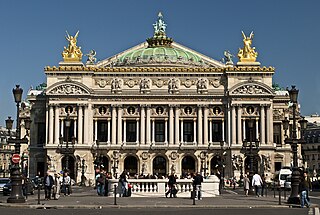
The Palais Garnier, also known as Opéra Garnier, is a 1,979-seat opera house at the Place de l'Opéra in the 9th arrondissement of Paris, France. It was built for the Paris Opera from 1861 to 1875 at the behest of Emperor Napoleon III. Initially referred to as le nouvel Opéra de Paris, it soon became known as the Palais Garnier, "in acknowledgment of its extraordinary opulence" and the architect Charles Garnier's plans and designs, which are representative of the Napoleon III style. It was the primary theatre of the Paris Opera and its associated Paris Opera Ballet until 1989, when a new opera house, the Opéra Bastille, opened at the Place de la Bastille. The company now uses the Palais Garnier mainly for ballet. The theatre has been a monument historique of France since 1923.
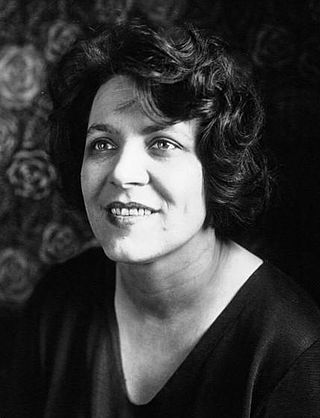
Marie-Louise Damien, better known by the stage name Damia, was a French singer and actress.

The Olympia is a concert venue in the 9th arrondissement of Paris, France, located at 28 Boulevard des Capucines, equally distancing Madeleine church and Opéra Garnier, 300 metres (980 ft) north of Vendôme square. Its closest métro/RER stations are Madeleine, Opéra, Havre – Caumartin, and Auber.

Freda Josephine Baker, naturalised as Joséphine Baker, was an American-born French dancer, singer and actress. Her career was centered primarily in Europe, mostly in her adopted France. She was the first black woman to star in a major motion picture, the 1927 silent film Siren of the Tropics, directed by Mario Nalpas and Henri Étiévant.
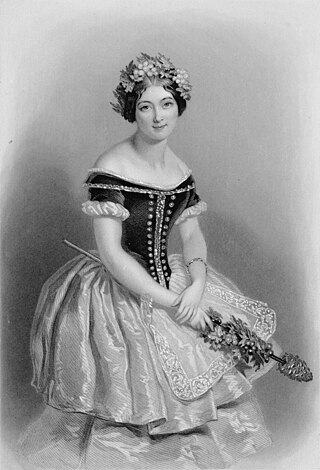
Giselle, originally titled Giselle, ou les Wilis, is a romantic ballet in two acts with music by Adolphe Adam. Considered a masterwork in the classical ballet performance canon, it was first performed by the Ballet du Théâtre de l'Académie Royale de Musique at the Salle Le Peletier in Paris on 28 June 1841, with Italian ballerina Carlotta Grisi as Giselle. It was an unqualified triumph. It became hugely popular and was staged at once across Europe, Russia, and the United States.
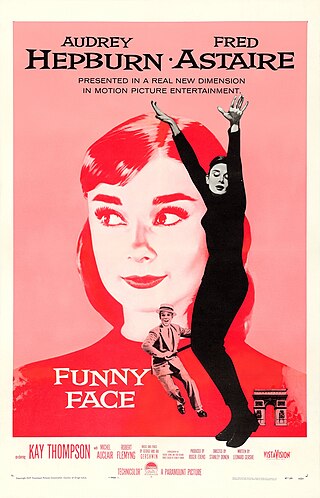
Funny Face is a 1957 American musical romantic comedy film directed by Stanley Donen and written by Leonard Gershe, containing assorted songs by George and Ira Gershwin. Although having the same title as the 1927 Broadway musical Funny Face by the Gershwin brothers, and featuring the same male star, the plot is completely different and only four of the songs from the stage musical are included. Alongside Astaire, the film stars Audrey Hepburn and Kay Thompson.
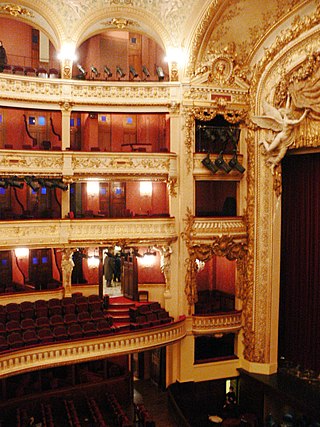
The Opéra-Comique is a Paris opera company which was founded around 1714 by some of the popular theatres of the Parisian fairs. In 1762 the company was merged with – and for a time took the name of – its chief rival, the Comédie-Italienne at the Hôtel de Bourgogne. It was also called the Théâtre-Italien up to about 1793, when it again became most commonly known as the Opéra-Comique. Today the company's official name is Théâtre national de l'Opéra-Comique, and its theatre, with a capacity of around 1,248 seats, sometimes referred to as the Salle Favart, is located at Place Boïeldieu in the 2nd arrondissement of Paris, not far from the Palais Garnier, one of the theatres of the Paris Opéra. The musicians and others associated with the Opéra-Comique have made important contributions to operatic history and tradition in France and to French opera. Its current mission is to reconnect with its history and discover its unique repertoire to ensure production and dissemination of operas for the wider public. Mainstays of the repertory at the Opéra-Comique during its history have included the following works which have each been performed more than 1,000 times by the company: Cavalleria Rusticana, Le chalet, La dame blanche, Le domino noir, La fille du régiment, Lakmé, Manon, Mignon, Les noces de Jeannette, Le pré aux clercs, Tosca, La bohème, Werther and Carmen, the last having been performed more than 2,500 times.
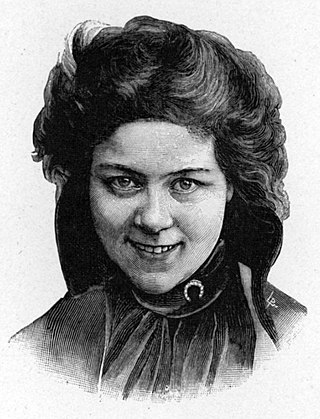
Loie Fuller, also known as Louie Fuller and Loïe Fuller, was an American actress and dancer who was a pioneer of both modern dance and theatrical lighting techniques.

Jane Avril was a French can-can dancer made famous by Henri de Toulouse-Lautrec through his paintings. Extremely thin, "given to jerky movements and sudden contortions", she was nicknamed La Mélinite, after an explosive.

Salome is a one-act tragedy by Oscar Wilde. The original 1891 version of the play was in French; an English translation was published three years later. The play depicts the attempted seduction of Jokanaan by Salome, step-daughter of Herod Antipas; her dance of the seven veils; the execution of Jokanaan at Salome's instigation; and her death on Herod's orders.
Théâtre des Délassements-Comiques is a name that was used for a number of different theatres in Paris from 1785 to 1890.

The important place of women in dance can be traced back to the origins of civilization. Cave paintings, Egyptian frescos, Indian statuettes, ancient Greek and Roman art and records of court traditions in China and Japan all testify to the important role women played in ritual and religious dancing from the start. In the Middle Ages, what has become known as ballet had its beginnings in Italian court festivals when women frequently played the parts of men. It was however in late 17th-century France that the Paris Opera produced the first celebrated ballerinas. While women began to dominate the ballet scene in the 18th century, it was with the advent of Romantic ballet in the 19th century that they became the undisputed centre of attraction with stars playing the leading roles in the works of Marius Petipa, appearing in theatres across Europe from Milan's La Scala to the Mariinsky Theatre in Saint Petersburg. More recently, women have played a leading role in developing various forms of modern dance including flamenco and expressionist dance.
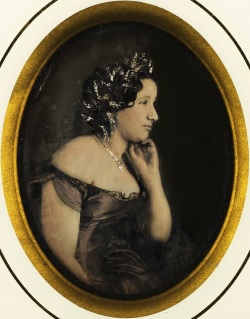
Élisabeth-Céleste Venard, countess of Chabrillan, better known by her stage name Céleste Mogador and often referred to simply as Mogador, was a French dancer and writer.

Anne Régina Badet was a French comedic actress, dancer, and star of the Ópera-Comique de Paris.



















